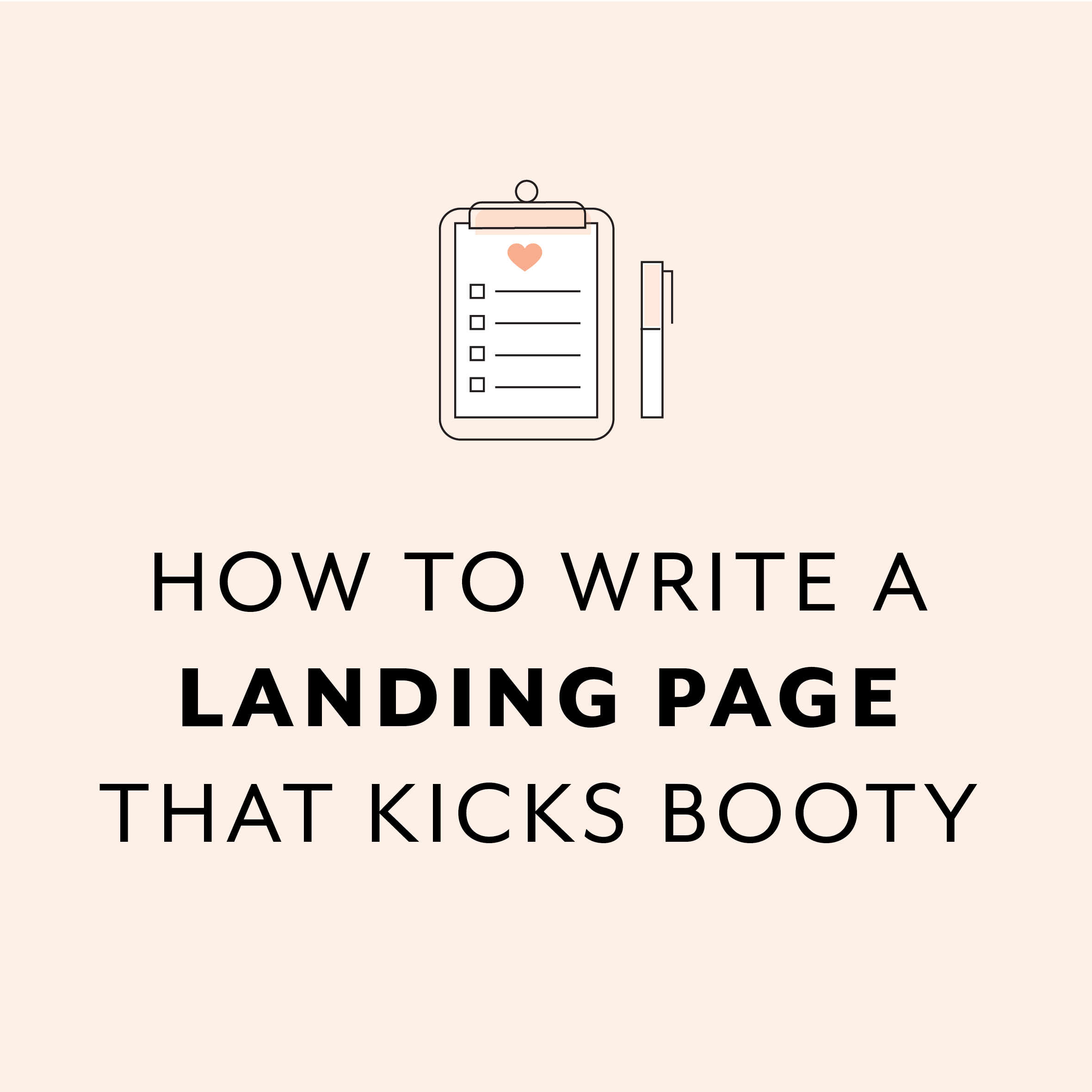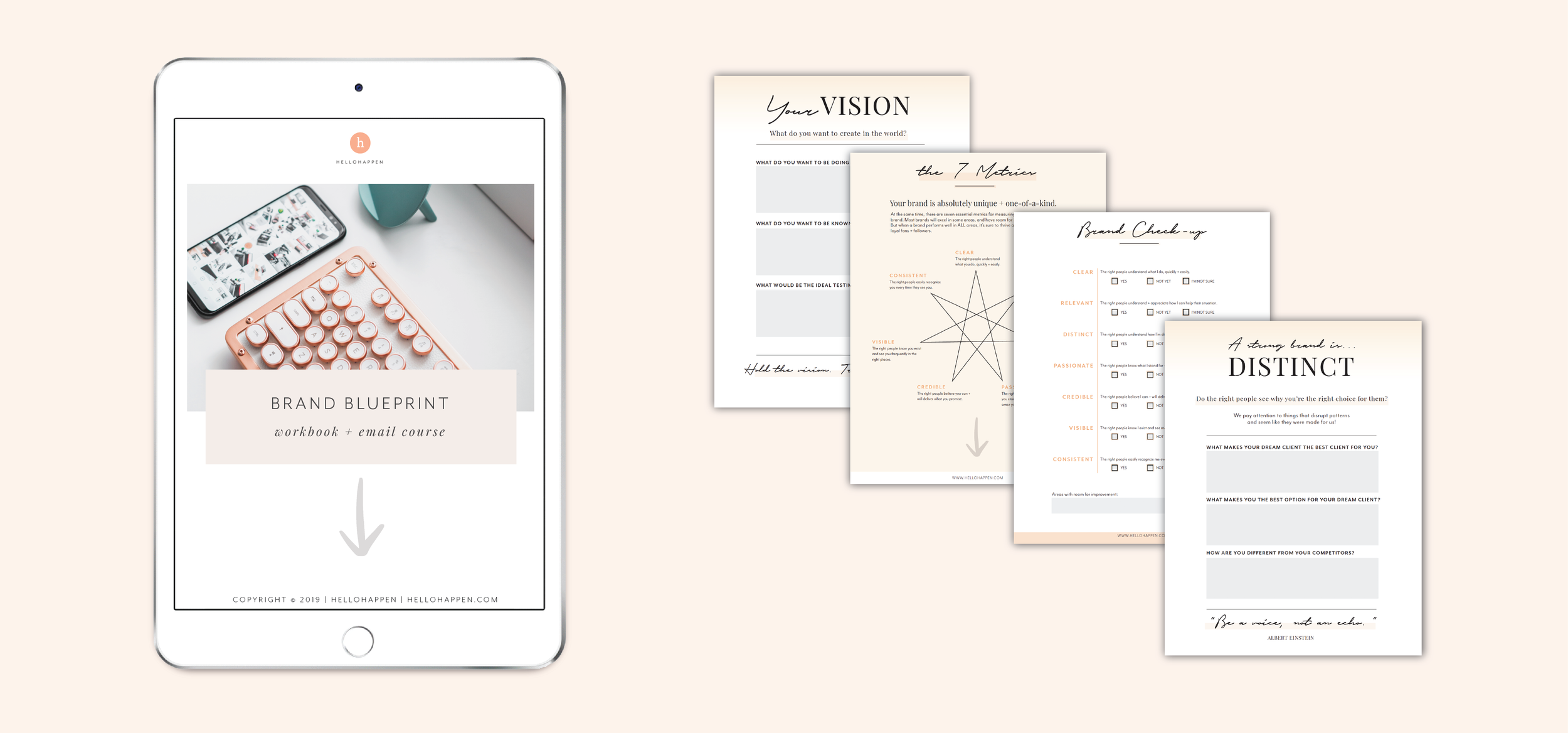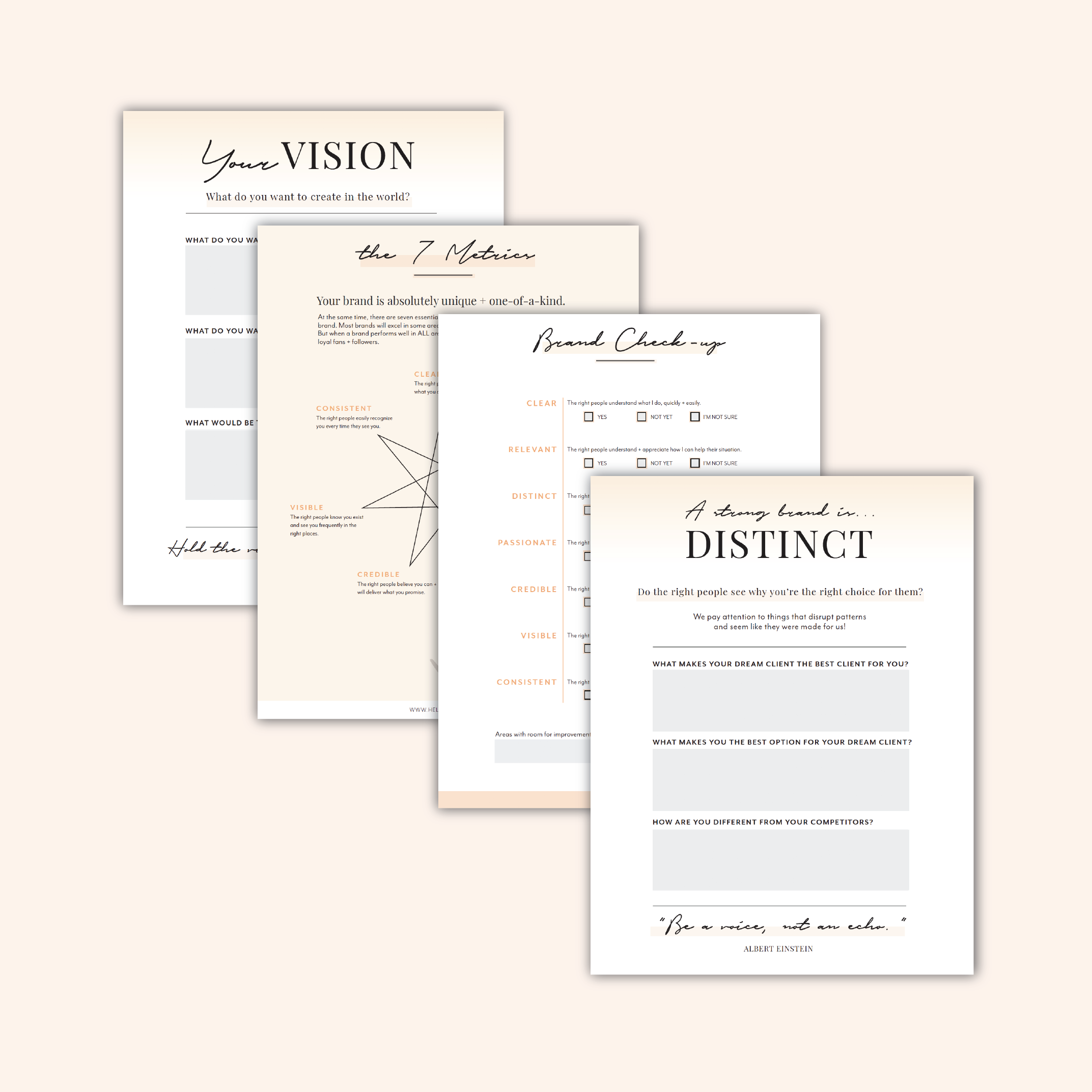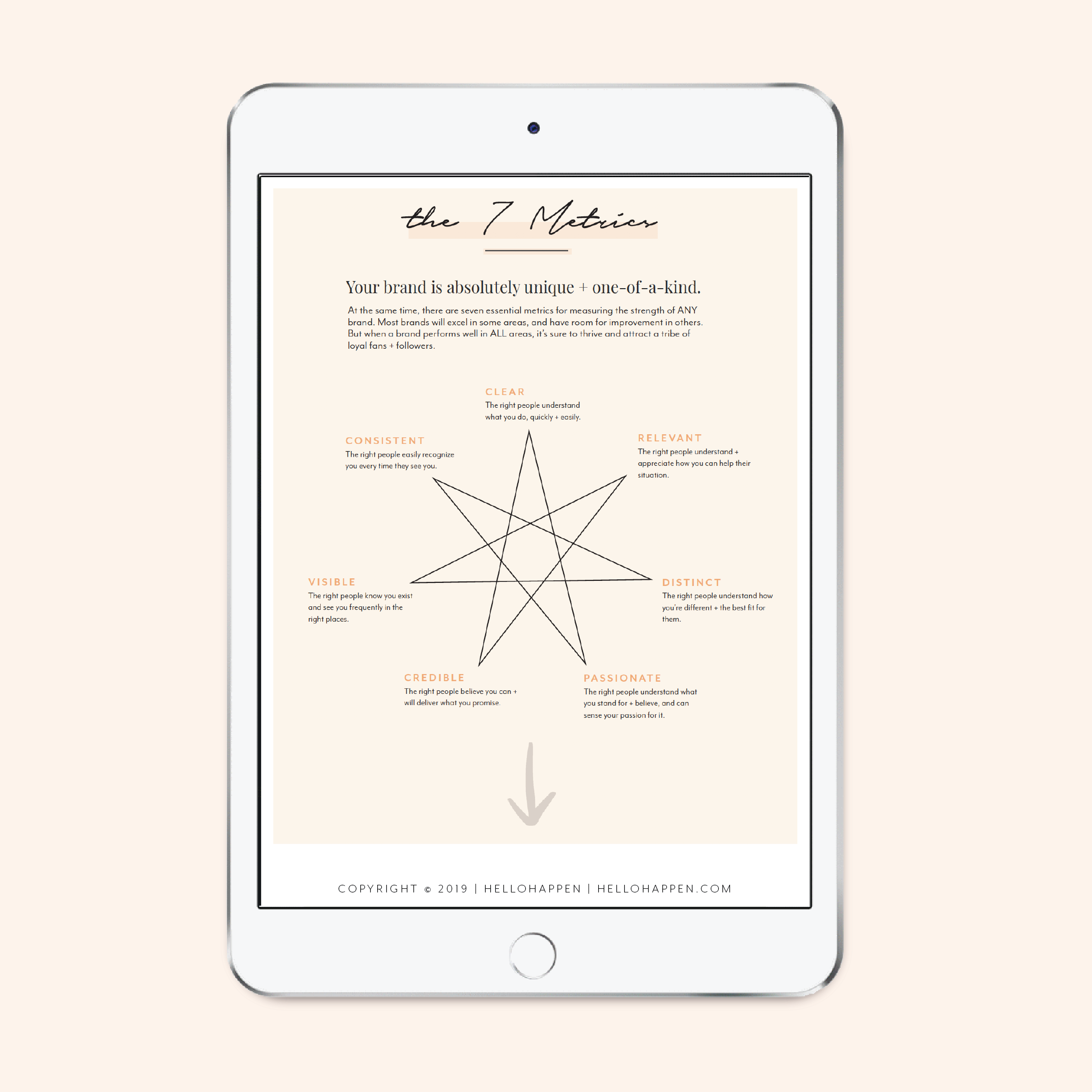Learn Your Customer's Language
“I’m tired of shouting into the void! I need to find a way to rise above all this noise.”
Getting noticed online is all about connecting with your audience on a real, genuine level, so they remember you in the sea of other distractions in their day!
Think about walking down the sidewalk and hearing someone ranting at the crowd. People ignore them because they’re speaking to everyone — which means effectively they’re speaking to no one.
When you’re missing the mark with your copy, it’s because your dream clients assume your message is intended for someone else.
But when you speak your customer’s language, it’s the equivalent of whispering in her ear. She knows you’re speaking straight to her; it’s a surefire way to get noticed!
You want to show that you care, you listen, and you understand. That you get it. That you’ve invested time into understanding and solving the problems she faces.
So how do you learn the language of your audience? Let's break it down into a few easy steps!
Step 1. Define your dream client.
Take some time thinking about who you’d LOVE to work with. This doesn’t have to be perfect right now. Your dream client “avatar” will evolve over time. As you work with more clients, you’ll figure out who you enjoy working with, and who brings out the best in you.
But start somewhere! Have a person in mind and think about what they like, what they don’t like, what they daydream about, what they’re struggling with, her personality strengths, quirks, and flaws… picture the absolute ideal person you want to connect with and serve!
— P.S. Snag my Dream Client workbook ($20) to figure out EXACTLY who this person is, what makes her tick, what she needs right now, and how to speak to get her attention.
Step 2. List your questions.
Here are a few of the basic questions you should try to answer about your target audience and the way they see and feel about things, especially the problem you are solving. You may want to add to this list.
Who has the problem I'm solving?
What is that like for them?
How does it make them feel?
What do they think they need to solve this problem?
What have they tried?
What transformation are they looking for?
If they worked with someone like me, what outcome would they want?
If I offered a free piece of help or content, what would they really love?
Now get ready to answer these and other questions! You don't need to answer each and every question, and you may get information that doesn't match a specific question. What you want to do in this next step is listen and learn, and build up a picture in your mind of your target audience and how they see and feel about things.
— P.S. My Dream Client workbook ($20) includes sample interview, poll, and survey questions, along with some best practices for running these effectively.
Step 3. Practice social listening.
Start by visiting some of the places your target audience frequent. Facebook groups, Amazon book review pages, and other online platforms can be a great place to start. If your business is all about addressing behavior issues in dogs, look up some Amazon book reviews for books about training dogs with behavior issues.
Language to look for...
Look for statements like:
I wish...
I want...
I struggle with...
It makes me feel...
I need...
I tried...
Does anyone know how to...?
Can anyone help me with...?
How can I...?
When you see key comments that shed light on these questions and your target audience, drop them into a document to refer to later.
Step 4. Have real conversations.
This is the super fun part! The objective here is to meet with and informally "interview" people to really get to know them. You want to really immerse yourself in the language and perspectives of your target audience.
how it works
Define a period of a few weeks, or maybe a month or two, and meet with as many people as possible who fit your dream client profile in some way.
Write out your questions in advance, mirroring the questions you want to answer as part of this exercise (see Step 1). You might start with something easy like "Tell me about yourself!" and then get more and more focused in on the problem at hand.
(If you know exactly who your "dream client" or ideal client is, great! If you aren’t sure yet, just look for opportunities to meet with people who have the problem you solve, and who you think you’d like to work with.)
Schedule calls and hop on the phone, introduce yourself, and ask your questions.
— P.S. Want a foolproof guide to this process? Snag my Dream Client workbook ($20).
finding people to talk to
So how do you find these people? You may already have a network of people to reach out to — maybe online, maybe in person. In-person networking events are a great place to connect with people who are eager to expand their networks and might be happy to chat with you.
You can also start in the same place you did your online social listening exercise. Write a simple post asking for interviews, and make a small offer if you can - like a free consultation, a free coaching session, free access to a piece of content you normally sell, or whatever else you offer.
It's important to avoid coming across like a disguised sales pitch. You aren't trying to get people on the phone so you can sell to them. Be crystal clear that this is simply market research to help you understand your audience better.
The first time to post an invitation like this, you might get crickets. That's okay! Keep at it. Make it your goal to talk to one person. Then once you talk to that person, make it a goal to talk to three people. Then five. Then 10. And so on.
a note about scheduling
I gently discourage using an auto-scheduler like Calendly to set up these calls. Why? They’re great for saving you time, but they put the burden of scheduling on the person who is already doing you a favor. It’s just kinda awkward.
Try either sending them a few times to choose from, or asking if they have a scheduler they'd like you to use!
Have fun!
These interviews should be fun, because you're talking to your people! These are the people you're in business to support and help, so treat each conversation like pure gold, because it is. Be yourself, don't sweat the details, and try to enjoy learning as much as you can.
If the opportunity arises, and you feel that the interviewee is receptive, feel free to serve and support them. If you can help them get a little unstuck with their current challenge, that's great practice and experience — and may wind up with a new client!
Remember to send an earnest thank you to follow up! If you did end up offering some free advice or information, it can be extra nice to summarize your recommendations or any techniques you suggested, in a set of organized notes.
Step 5. Analyze.
Now it's time to answer a few questions. Go back to the original questions you set out to offer, and spend some time writing your answers.
Then give these some thought as well:
What have I learned about my audience?
How do they see and feel about the world?
What language do they use to describe their problem and what they need?
What do they want? What do they need?
What's the transformation they're looking for?
How can I package my services to really serve them?
How can I meet them where they are right now?
How can I talk about what I can do for them, in a way that they'll understand?
Is there a free piece of help I can offer as an opt-in, that they would love?
What do I still not know?
If the answer to that last question is "a lot," consider doing another round of research to fill in those gaps!
Step 5. Put it into action!
If you've reached this point, woohoo! Way to go! Now it's time to put everything you've learned to good use, in a variety of ways:
Update your Dream Client Profile to reflect what you learned! If you don’t have a Dream Client Profile, there’s a template in my Dream Client workbook ($20).
Create, launch, and sell an offer that directly solves the problem they described. If you need help, grab the New Offer Blueprint + Sales Plan ($30).
Use the language of your audience in all your copywriting, to catch their attention and show that you understand them. Not clear yet about your brand voice + messaging? Snag my Brand Voice + Messaging workbook ($20).
Deliver the emotions your dream client wants to feel, in your brand voice, content, website experience, visual identity, and everywhere else.
Incorporate the topics you discussed into your content strategy, addressing the key pain points and questions your target audience has. (Seriously, this is a gold mine for content ideas!)
Hi, I’m Ashley!
I’m all about growing your mission-driven business with heart and intention. If you need help connecting authentically with your dream clients, you’re in the right place!
pin this post!
from the shop:
Includes a Template
Dream Client Profile:
more from the blog:
Swipe my free
BRAND BLUEPRINT + 7-DAY EMAIL COURSE
Grab the Blueprint, find a cozy spot, and let’s build your stand-out brand together! Join my email list and get my Brand Blueprint + 7-day Email Course for free. (You can unsubscribe anytime, but I don’t think you’ll want to!)













